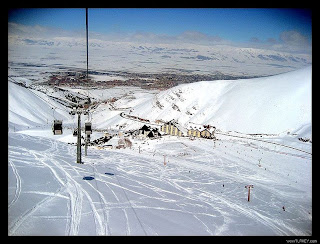Fenerbahce SK, which established in 1907, is the one football team out of Turkcell Super League's best for teams. It became champion 17 times and its best degree is that it played at quarter final in champions league. Fenerbahce is known as a rich club in Turkey but although Fenerbahce spend milion euros, it doesn' reach its goal.
Istanbul 2010 ECOC, Culture aand Arts, Urban Projects, Tourism and Publicity, Activities, Applications
Archivo del blog
-
▼
2008
(22)
-
▼
December
(22)
- FENERBAHCE SK
- GALATASARAY SK
- BESIKTAS JK
- Football in Turkey
- Topkapı Palace
- Tourist attraction
- Pamukkale
- Kaçkar Mountains
- Uludag
- Palandöken
- Ölüdeniz
- Anıkabir
- Music and Opera
- Visual Arts
- Urban Culture
- Museums and Cultural Heritage
- Urban Operations
- New Places
- Benefits of İstanbul ECOC 2010
- Defination Of ECOC
- Project > Bonn Biennial
- About
-
▼
December
(22)
Etiquetas
- Anıkabir (1)
- İstanbul 2010 ECOC (8)
- Kaçkar (1)
- Ölüdeniz (1)
- Palandöken (1)
- Pamukkale (2)
- Sports (4)
- Topkapı Palace (1)
- Turkey About (1)
- Turkey Project (1)
- Uludag (1)
GALATASARAY SK
Galatasaray SK, which was set up in 1905, is the one football team out of Turkcell Super League's best for teams. It became champion 17 times. It won the UEFA cup and UEFA SUPER cup in 2000.
BESIKTAS JK
Beşiktaş JK, which was established in 1903, is the oldest team in Turkey. It won championships 11 times at Turkey League. It gained popularity with its supporter group. Its sporter group, which is " ÇARŞI ", has broken the world record. Beşiktaş JK's the worst degree in Europe is that it lost the match which was played against Liverpool with 8-0 score.
Topkapı Palace
Wednesday, December 17, 2008
Tourist attraction
Pamukkale is a tourist attraction. It is recognized as a World Heritage Sites together with Hierapolis. A few other places in the world resemble it , including the Mamoth Hot Srings in the USA and Huanglong in Sichuran Province of China ( another UNESCO World Heritage Site). Hierapolies-Pamukkale was made a World Heritage Site in 1988.
Before the World Heritage designation, Pamukkle went unprotected for decades in the late 20th century and hotels were built on top of the site, destroying parts of the remains of Hierapolis. Hot water from the spring was taken of fiil the hotel pools and the waste water was spilled over the mounment itself, turning it brownish. A tarmac road ramp was built into the main part. People walked around with shoes, washed themselves with soap and shampoo in the pools and rode bikes and motorbikes up and down the slopes.
By the time UNESCO turned its attention to Pamukkale, the site was losing its attraction. Officials made attempts to restore the site. The hotels were demolished, and the road ramp was covered with artificial pools which today are accessible to bare-footed tourists, unlke most other parts of the site. A small trench was carved along the outside of the ramp to collect the water and prevent it from spilling. The brownish parts have been left to be bleached by the sun without being covered by water to diminish the problem. Therefore many pools are empty. Others parts are covered with water for an hour or two, on a rotating schedule.
The underground valcanic activity which causes the hot springs also forced carbon dioxide into a cave. The result was called the Plutonium meaning place of the god, Pluto. Tadpoles can be found in the pools.
Sunday, December 7, 2008
Pamukkale
Pamukkale, meaning "cotton castle" in Turkish, is a natural site and attraction in south-western Turkey in the Denizli Province Pamukkale is located in Turkey's Inner Aegean region, in the River Menderes valley, which enjoys a temperate climate over the greater part of the year.
The ancient city of Hierapolis was built on top of the white "castle" which is in total about 2700 meters long and 160m high. It can be seen from the hills on the opposite side of the valley in the twon of Denizli, 20 km away.
Kaçkar Mountains
Uludag
Palandöken
here is a ski resort at the locality of mountain called Başköy, 2,100 m. high, and the distance between the station and the city is 4 km.
The ski trail is the longest in Turkey. Because of the quality of the snow steepness of slopes, and length of trail, Palandoken is known as the best mountain in Turkey for skilled skiers. The toughest runs are on the backside of the mountain known as the Ejder trail. Due to fog and avalanche risk the Ejder lifts and trails are sometimes closed.
There are four hotels on the mountain: Polat Renaissance hotel, Dedeman hotal, Dedeman Ski Lodge, and Palan Hotal. Because of the center's closeness to Erzurum, visitors can also stay in hotels in Erzurum, notably two luxury ones.
Ölüdeniz
Anıkabir
Anıtkabir is the mausoleum of Mustafa Kemal Atatürk, the leader of Tukish War of Independence and the founder and first president of the Republic of Turkey. It is located in Ankara and was designed by architects Professor Emin Onat and Assistant Professor Orhan Arda, who won the competition held by the Turkish Government in 1941 for a " mounmental mausleum " for Atatürk out of a total of 49 international proposals. His tomb faces the Atatürk Mausoleum, on the opposite side of the Ceremoinal Ground.
The site is also the final resting place of İsmet İnünü, the second President of Turkey, who was interred there after he died in 1973. His
Friday, December 5, 2008
Music and Opera
History and Music Embrace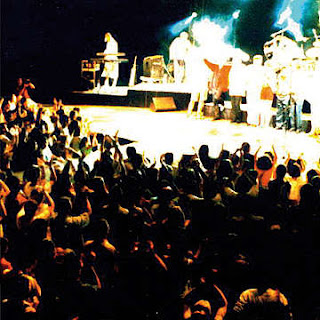 The first step to enliven music as befits the necessity it is in a capital of culture from 2008 by holding mini concerts ot such tourist atteactions as Museum of Archaeology and Fountain of Ahmet III in Istanbul, which is the only European metropolis where music life protty much remains dormant following the summer festivals.
The first step to enliven music as befits the necessity it is in a capital of culture from 2008 by holding mini concerts ot such tourist atteactions as Museum of Archaeology and Fountain of Ahmet III in Istanbul, which is the only European metropolis where music life protty much remains dormant following the summer festivals.
With Youth for Youth A series of classical music concerts, accompanied by pop concert-like presentations, aiming to freshen up the elitist image of this music, which is really the most expessive of universal values.
A series of classical music concerts, accompanied by pop concert-like presentations, aiming to freshen up the elitist image of this music, which is really the most expessive of universal values.
Istanbul 2010 " National Team " Youth Orchestra
A programme for gradual conversion to a young professional orchestra. An orchestra of highest international standards, which will provide employment opportunities to young professionals and be active in Turkey and abroad. Also the laboratory and messenger for the new pieces to be composed for 2010.
Festival of Contemporary Musical Theater
Opera productions which will be dramatized with young artists and which will realize the actual potential of Istanbul, accompanied with concepts to raise the musical and theatric expectations of its artist and aficionados.
Trans Border Instrument Families
The history of how an instrument of eastern origin has become the most popular one in the West. Activities to bring together the past present of the instruments as well as classical, traditional, jazz and pop/rock music.
29th Parallel
A comparative musical work portraying how differently the ud, the most popular instrument in the East, is played in Turkey, Egypt and Syria...
Music, the Witness of History
Concerts about the turning points of Istanbul meeting European civilizations and documentaries on parallelisms with present Istanbul.
Visual Arts
Support of Istanbul Art Shows and International Fairs
To enrich and diversify the contents of Istanbul art shows and make them more accessible for limited income groups as well as to give them an international dimension. At the same time, provide consultancy services and financial help to the fairs to facilitate participation of international galleries and col
lectors to 2010.
Establishing and Supporting Arts and Culture Forums To prepare annual international and interdisciplinary forums in collaboration with local goverments, universities and NGos in 2008-2010; to publish the results. The aim is to bring togerhet the arts and culture forums ( panels, symposia, conferences and workshops ) to be organized by local goverments, universitias and NHOs as an integrated project within the framework of Istanbul 2010 and to provide consultancy services to all involved institurions.
To prepare annual international and interdisciplinary forums in collaboration with local goverments, universities and NGos in 2008-2010; to publish the results. The aim is to bring togerhet the arts and culture forums ( panels, symposia, conferences and workshops ) to be organized by local goverments, universitias and NHOs as an integrated project within the framework of Istanbul 2010 and to provide consultancy services to all involved institurions.
ULISfotoFest - International Photography Festival
Utilizing the traditional and modern presentation possibilities of photography and fo the festival to embrace the visitors as an event that faces bot only the West and the North but also the East and the South, to create an atmosphere with the universal language of photography, careful to avoil all kinds of discrimination and prejudices as well as emphasizing communication and friendship between people from diverse countries and culture.
Urban Culture
Istanbul 2010 Volunteers To start the European Capital of Culture Volunteer Programme for youth to contribute and vitalize the projects and for them to be a part of it by letting them help with the activities the run-up to the year 2010. For this purpose, to train students from last two years of high schools and freshmen from universities to help milions of visitors expected in istanbul in 2010.
To start the European Capital of Culture Volunteer Programme for youth to contribute and vitalize the projects and for them to be a part of it by letting them help with the activities the run-up to the year 2010. For this purpose, to train students from last two years of high schools and freshmen from universities to help milions of visitors expected in istanbul in 2010.
Projects for a Hindrance-free City for the Handicapped
These projects aim to convene special and meetings to raise awareness towards making the city more handicapped friendly as 2010 appoaches. To allow a programme of seminars prepared especially by the handicapped to be held for the benefit of the municipalities and other institutions. Therefore, to take important steps to open more of the city to the free roaming of the handicapped.
Step by Step ( Tourism and Culture )
To prepare and to promote facilities of walking, hiking and doing sports on specially marked routes for the Istanbulites who engage in amatuer sports.
Museums and Cultural Heritage
Yenikapı Museum / Istanbul Museum - " Yellow Helmet Tours "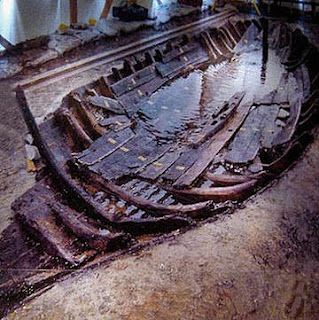
To reorganize the Yenikapı zone as a Museum of Urban Archaeology and as an Archaeological Park to axhibit the geo-archaeological finds, ports, boasts, fossils and other paraphernalia. To open the area to controlled tours under the programme named " Yellow Helmet Tours " until a museum area is built.
To reorganize the exhibits of the Museum of Archaeology with a contemporary museology concept.
To reorganize the exhbits of the Museum of Archaeology with a contemporary museology approach to emphasize that it is an imperial museum. The objective is to diversify and sort the objects on exhibit, to display their stories, to develop temporary exhibition practice. Also to record the information on objects in collection in a database.
Museologic Rehabilitation of Topkapı Palace Museum, Renewal of the Kitchens, Arsenal and Fabrics
To convert and rehabilitate the Topkapı Palace Museum in an integrated manner including museologic infrastructure, exhibit-organization, administration, visitor management, financial management, training, communnictions and promotion matters. To rehabilitate the storages of the Kitchens, Arsenal and Fabrics sections with a contemporary museology approach. To conserve and restore the collections, to record the information on objects in collection in a database and to the visitors using latest methods and interactive systems, with a modern concept of museology, in historic and thematic contexts.
St. Irene Museum of Relics and Icons
To prepare for exhibition the collections of icons and relics belonging to other religions stored at the St. Sophia Museum, to display these in the Atrium in the back section of St. Irene and in the galleries surrounding it. To organize a large exhibition with the participation of similar collections abroad in 2010.
Istanbul Museum of Painting and Sculpture - Virtural Museum
To rehabilitate the Museum in an integrated manner with a contemporary museology concept. To record the information on objects in collection in a database thus aloowing access to a much wider audience through a virtual museum to be set up.
Museum of Architect Sinan
To establish a museum to collect and to display interactively in a historical context, information and documents on the works of Architect Sinan.
In paralel to the development of the museum project by Architect Sinan Unversity, work is underway to allocate, through the Directorete of Foundations, one of Sinan's masterpiece buildings for this purpose.
Biosphere ( Center of Natural Sciences )
The objective of the Center to be astablished at the Saint Joseph High School is to orgabize permanent and temporary exhibitions in zoology, botanics, seismology, ecology, geology, space and genetics.
The project, which has gained an international charecter with the participation of Istanbul Technical University, Paris Sciemce Center and TEMA ( The Turkish Foundation for Combating Soil Erosion, for Reforestation and the Protection of Natural Habitats) aims to give everbody from the age of three aducation in natural sciences, to develop the social awareness for the environment and to emphasize the biologic richness and biodiversity of Turkey.
Thursday, December 4, 2008
Urban Operations
Renovation of Atatürk Cultural Center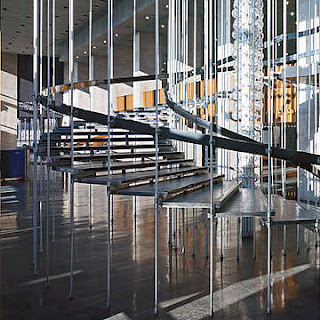
Opened at the end of 1960s as the first major performing arts center of Istanbul, the Center will be renovated and offered for various purposes with its modernized equipment. The 2008-2009 maintenance and repair works to be supported and coordinated by the Ministry of Culture and Tourism to be ready in time fot 2010.
New Places
Ayazağa Cultural Center
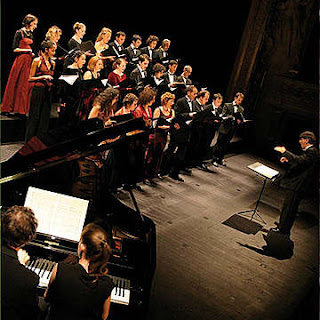
Istanbul Library in Rami Barracks
The 250 year old Rami Military Barracks is being handed over to Istanbul metropolitan Municipality to be developed as a public library and cultural center.
European House of Art ( Istanbul 2010 Operations Center )
This building, erected by Agop Köçeyan as a winter redidence in the mid-19th century is being restored to its original glory. Located in Beyoğlu, the center of Istanbul's rich cultural life and housing the cultural institutions from European countries, the building will be used as a cultural center also after 2010.
Sütlüce Cultural and Congress Center
Istanbul Metropolitan Municipality is converting the historic slaughterhouse on the Golden Horn ( Haliç ) into a conference and performing arts center. Covering an area of 73,000 sq m, the center, once completed, w,ill serve Istanbulites with soncert and congress halls, exhbition spaces, movie and drama theaters, magazines and car parks.
Benefits of İstanbul ECOC 2010
What will happen in the year 2010 in Istanbul ?
From 2006 onwards the name of Istanbul will be associated and the arts all over the world.
As Turkey moves ahead with process of its candidacy for the European Union, the projects that will be realized will demonstrate that Istanbuli the symbol of the country, has been interacting with European culture for hundreds of years.
The city's cultural heritage will be managed in a sustainable manner and it will become even more of a magnet than ever.
Istanbul will achieve lasting gains in the fields of urban renewal, urban living and environmental and social development.
New museums will be astablished to protect and display our cultural asets and historical buildings will be renovated, given new roles and opened to the public.
Istanbullites will embrace new artistic discilines. Young talented people will have the opportunity to become more closely involved in artistic creativity.
Jobs will be created for a large number of people ranging from communications to organization, education, design, management and creavtive fields.
Those who come to Istanbul for culturaland artistic projects will visit the city's cultual riches, mosques, churches, palaces and museums.
Cultural tourism will be invigorated and develop. ( Educated, cultured tourists spend three times as much as normal tourists. This means that, as a European Capital of Culture, Istanbul will have a great tourism potential.)
Many people from the world of culture and the arts, together with members of the print and visual media, will come to Istanbul from Europe and different countries all around the world.
This will make a positive contribution to the promotion and branding of Istanbul.
Besing selected as a Europe Capital of Culture will give a boost to the city's economis relations with Europe as well as contributing to its cultural relations.
With the renovation that will take place, the administrators and administered will join together, hand in hard, sharing their konwledge and experience, to develop a long-term sustainable model for the future.
Through discovering the beacty of their city, Istanbullites will be proud to live in such a city.
Defination Of ECOC
The idea of having a European Capital of Culture was first put forward in 1985 when Melina Mercouri was Greek Minister for Culture. In the same year the European Union Council of Ministers determined the scope of the project and put it into implementation. Form 1985 to 2000 one city from the countries which were members of the European Union was selected each year as European Capital of Culture. To mark the start of the nwe millennium, from 2000 onwards the title of European Capital of Culture began to be given both to more than one city each year and to cities in countries which werecandidates for EU membership.
Project > Bonn Biennial
The 2008 theme of the Bonn Biennial event, the previous themes of which were India for 2006, and New York for 2004 resnectively, was specified as ' Bosphorus ' and the objective of demonstrating the current artistic and cultural developments in Turkey was adopted.The Biennial featured works from all around the world in literature, film, music, dancing and the visual arts. The Istanbul 2010 European Capital of Culture Agency, with its ' Bosphorus ' project, enabled visitors to the Biennial to enjoy a uniqu ' Digital Bosphorus Tour' experience.
Click to read related news.


About
With a view to promoting Istanbul as a destination for culture tourism through and arts events and cultural diversity, besides relying on the city's existing wealth of history, a concept of promoting Istanbul though culture and art is being developed and events to this and are being organized. The aim is to reinforce and anhance the existing perception along this direction both within Turkey and abroad; increasing tje number af visitors to Istanbul and enabling the city to gain further economic benefits from this process.
THE FOLLOWİNG ARE DONE WİTHİN THİS FRAMEWORK,
Events in Turkey and abroad are being utilized for promoting the Istanbul 2010 project,
Participation in international tourism, book, art and design fairs and exhibitions that can be linked with the 2010 Euopean Capital of Culture ( ECOC ) project
Istanbul 2010 is promoted among the congress participants in international conferences and congresses held in Istanbul,
Work is undertaken in coordination with public bodies and relevant sector establishments to follow up international events and to plan joint events.









